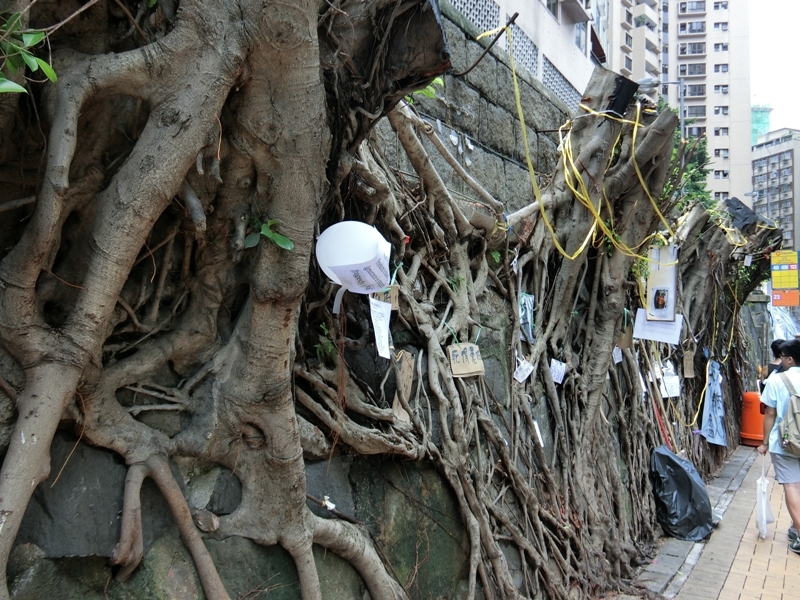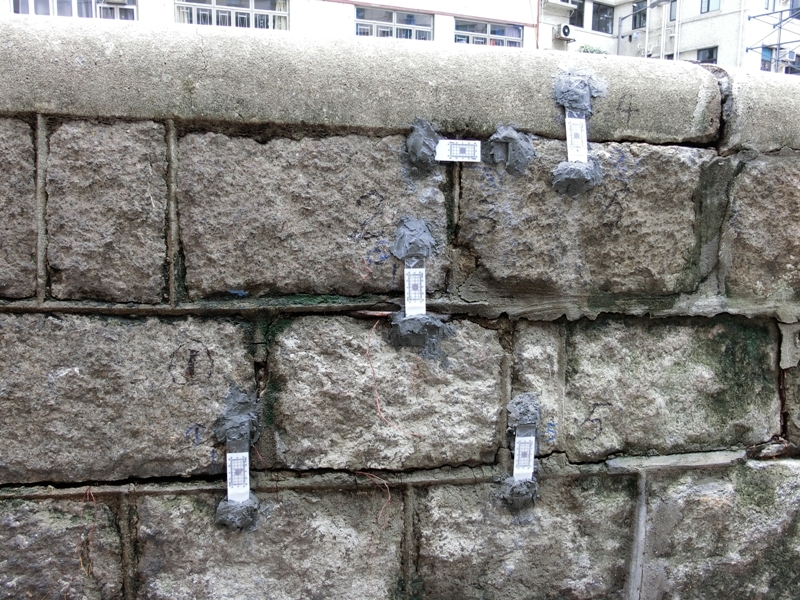At the night of 7 August this year, Highways Department decided to remove 4 wall trees near St. Stephen's Lane at Bonham Road promptly. According to the contents of the document that Highways Department submitted to the Working Group on Greening & Beautification Works in the Central & Western District, the major reason to remove the trees was because some new cracks were found on the stone wall and no mitigation measure was feasible within very short timeframe. This incident has aroused public attention and started to question about the reason behind for such decision. The issue has already become the focus of discussion in the city (Figure 1).
In order to explain to the public about the reasons for the tree removal, Highways Department published a Report on the incident on August 7, 2015. This report does not cause intense discussions among the public. Do people accept it or isn’t the report worth to mention? We try to analyze the major contents of the report and point out some of our views here. We sincerely hope that the management of wall trees can be improved after this incident, for both conservation of valuable tree resources and public safety taken into account.
There are many different types of reports. Some are those with extensive research, and to make recommendations with comprehensive analysis in order to reduce the recurrence of similar incidents in the future. Some reports are relatively simple to just record the whole story without making any suggestion for improvements. Highways Department's report is believed to be the latter. They only summarize the recent incident in brief, and stood for removing the trees was a proper decision. Unfortunately, the department did not have any further investigation for the incident and failed to provide new evidence. At the same time, they refuse to make recommendations for future wall tree assessment and management.
After leaving words for some background information, section 3 of the report started to give an account for the trees collapse incident on July 22. This part has made an observation (i.e. not through in-depth studies) for the collapsed tree (i.e. trees ID T2) as a review. It brings out that the tree collapse case is belongs to "tree anchorage shallow failure ". In fact, this section seems to be “arranged”to defend for removing the wall trees on August 7. As stated in paragraph 5.3, the cracks behind the removed trees T4, T5 and T6 (U-shaped drain and parapet wall), were at the same circumstances as "tree anchorage shallow failure ". Thus, if trees were not removed, they would have been collapsed as the same case as July 22. When the public see this inference, life matters, it seems that the incident should come to an end. (Figure 2)
This is not to overthrow the inferences and conclusions, because there is simply not enough information to make conclusion at the moment, we have too little knowledge on wall trees! In section 3.2 of the report, the situation of "tree anchorage shallow failure”and the roots growth inside the wall are closely linked. This is what the report mentions about “the engineering condition of the stonewall, the ground condition behind and the growth condition of the trees”. For the collapsed tree T2, the distribution of roots can actually be seen. However, for the removed trees, Highways Department actually did not make any investigation on the distribution of roots. If the inference is being made under an unknown circumstance, the conclusion made can only be treated as an estimation.
For tree T1, which grows independently, is being claimed that there are some straight and transverse cracks emerge. Thus the tree is actually in an unstable situation. Have anyone paid attention on the surrounding of wall trees and seen cracks in different sizes and directions? When roots grow into different structures, cracks appear. Especially in some concrete structures which are relatively weak, cracks are more common. In the Past, we have also seen many rifts on walls’surroundings have been repaired for numerous times while trees and walls still stand firm. The report points out that walls with such rifts are in unstable circumstances, if it is so, how many trees in Hong Kong would be removed? Can Highways Department clearly states out the differences between cracks of T1 and cracks of other walls? In the absence of in-depth study of investigation, this finding cannot be easily accepted. Otherwise, other wall trees will be at risk.
Lastly, T1 is relatively smaller than the other trees, and it grows on top of the wall but not the surface of the wall. If the tree is being pruned and supported temporarily, the risk can be controlled and further plan for preservation can be sought. But of course, this has to be built based on how dedicated to try to preserve the trees.
The report also mentioned in paragraph 4.4, the suggestion proposed by the Expert Panel on tree management on August 3 was the same as the one in 2013. And it was already proved to be infeasible. So why not make an instant discuss for other proposals without delaying the opportunity to find out workarounds?
This report from Highways Department does point out some considerations of wall trees risk assessment, but without any in-depth investigation, it is hard to tell at the moment whether the explanation to remove the trees is appropriate or not. Hereafter, the assessment of wall tree management will be still based on estimation. While there is not any scientific way to observe the growth of wall trees, the risk of dangerous trees remain and healthy trees remove still cannot be avoided.
For the wall tress at Bonham Road, Highways Department should conduct an in-depth investigation on the growth of roots and prove its assumptions. And for the cracks, in addition to only measure the width of the surface, aren’t there other methods and instruments to measure the depth or other parameters helping understanding the situation of the cracks? Without sufficient information, it may result as an inaccurate judgment in the future.
This incident certainly is the government's "public relations disaster." The key is that there is a serious shortage of information for removing the trees account to the public. This is not the only incident, but the general situation. People who manage trees should provide sufficient information to the public as soon as possible, such as inspection results of trees structure, and the corresponding quantitative data as much as possible, like the percentage of internal decay and so on. This is not only to let the public know more about the fact, what more important is that it can also increase people’s trust on the profession of tree risk assessment since some problems cannot be seen from the appearance of trees. Only saying “the tree is with failure potential after inspection”is already not enough to meet public demand for tree conservation.
At last, we strongly urge Highways Department to make this report only as "Interim Report". And hope they can continue to conduct in-depth studies of wall trees, and to submit a detailed report of research data. More than public accountability, it is also for the future of wall trees conservation.

Fig 1. The 4 removed wall trees

Fig 2. Cracks on short wall
Report on Emergence felling of stonewall trees at Bonham Road (English version)

